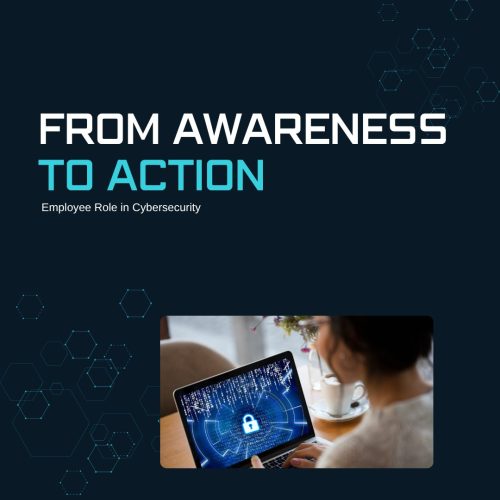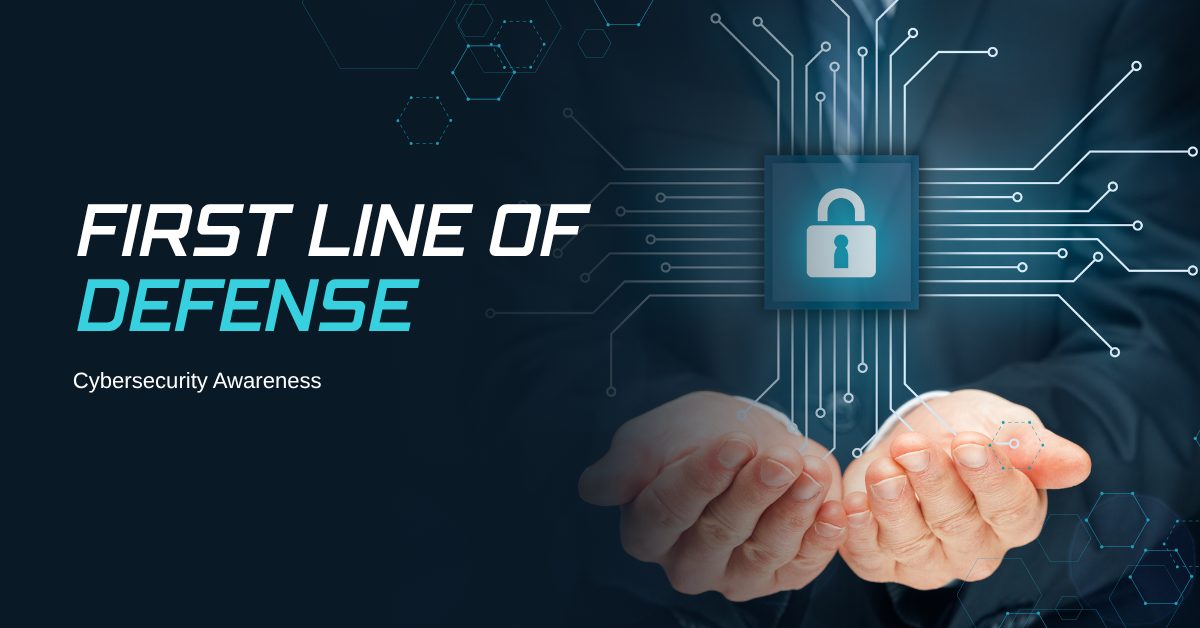How a Holistic Cybersecurity Approach Protects Your People, Data, and Business
The cybersecurity threat landscape continues to evolve, with attackers using increasingly sophisticated tactics to breach defenses. From phishing and malware to ransomware and insider threats, no organization is immune. What’s often overlooked, however, is that the weakest—and potentially strongest—link in any security chain is the employee.
Building employee cybersecurity awareness is no longer optional; it’s an essential element of a company’s defense strategy. A well-trained team can prevent costly mistakes, identify threats early, and help stop attacks before they cause real damage.
At Gallop Technology Group, we take a people-centered approach to cybersecurity. Our holistic cybersecurity approach focuses not only on the right tools and technology but also on empowering your employees to be active participants in protecting your organization. Through managed IT services, cyber risk management, and ongoing employee education, we help companies strengthen every layer of their security posture. Discover how GTG can help you build a culture of cybersecurity resilience.
The Importance of Employee Cybersecurity Awareness
A company’s cybersecurity strength depends on how well its employees understand digital risks. Even the best technology can’t stop an employee from clicking a malicious link or reusing a weak password. Cybercriminals know this—which is why many attacks now focus on exploiting human behavior rather than breaking through software defenses.
Understanding the Human Factor
Research shows that more than 80% of data breaches involve some element of human error. This could be a simple mistake, such as sending sensitive information to the wrong recipient, or falling victim to a well-crafted phishing email. This is where employee cybersecurity awareness plays a vital role—it transforms staff from potential liabilities into proactive defenders.
The Core of a Holistic Cyber Strategy
A holistic cyber strategy recognizes that protecting the organization isn’t just about firewalls or antivirus programs; it’s about combining technology, people, and processes. By incorporating the employee role in cybersecurity into daily operations, businesses build a security-minded culture that strengthens every department, from HR to finance to marketing.
Empowering Employees Through Continuous Education
Starting Strong: Cyber Awareness from Day One
Cybersecurity training should begin before an employee officially joins the company. Screening applicants for basic technical proficiency and data-handling awareness helps ensure they’re ready to contribute securely. During onboarding, new hires should learn about company policies on password creation, safe browsing habits, and proper use of communication tools.
Training should include practical examples, such as identifying phishing emails or responding to suspicious file attachments. Employees should also sign acknowledgment forms confirming their understanding of company security expectations.
Ongoing Training: Reinforcement Through Practice
Security education isn’t a one-time event. Regular refresher courses, mock phishing tests, and team-based challenges can help reinforce cybersecurity concepts. Quizzes and hands-on exercises not only keep employees engaged but also help management identify knowledge gaps.
The key is to make training engaging and relevant. For example, real-life case studies about companies that suffered breaches due to human error can highlight the importance of vigilance. Gamified learning platforms—offering small rewards for completion—can also improve retention.
Empowerment, Not Fear
It’s important to approach cybersecurity training with empowerment rather than punishment. Employees should feel trusted and supported, not fearful of making mistakes. When people know they can report suspicious behavior without blame, they become more willing to participate in proactive security practices.
Protecting the Organization with a Holistic Cybersecurity Approach
Beyond Tools and Firewalls
Technology alone cannot secure a company. A holistic cybersecurity approach integrates people, processes, and systems to build multi-layered defense mechanisms. This includes technical controls like firewalls, endpoint protection, and MFA—but also well-trained employees who follow secure habits every day.
Key technical and procedural measures include:
- Multi-Factor Authentication (MFA): Adds verification layers to prevent unauthorized logins.
- Regular patch management: Keeps systems updated against known vulnerabilities.
- Network segmentation: Prevents attackers from moving freely through systems if they gain access.
- Zero Trust policies: Ensures users verify identity at every step rather than assuming automatic trust within the network.
The Employee Role in Cybersecurity Compliance
Even the strongest systems rely on employee compliance. Staff must understand that ignoring policies—such as using personal email for work or writing down passwords—can open doors to hackers.
By reinforcing the employee role in cybersecurity, organizations ensure that everyone understands their part in protecting company data, maintaining compliance, and preventing downtime.
Cyber Insurance and Risk Management
Insurance as a Safety Net
Cyber liability insurance has become a crucial component of business continuity planning. It covers financial losses related to breaches, such as data recovery, customer notifications, and legal expenses. However, insurers are becoming more selective. Many now require companies to demonstrate employee cybersecurity awareness through documented training and policy enforcement.
Risk Management in a Holistic Cyber Framework
Cyber risk management extends beyond financial protection. It includes identifying, assessing, and minimizing risks at all levels of the organization. This involves maintaining detailed security documentation, training records, and incident response playbooks—key components of a holistic cybersecurity approach.
By merging insurance coverage with proactive risk management, businesses can respond more effectively when incidents occur, minimizing downtime and reputational harm.
Safeguarding Data: The Lifeblood of Every Business
Access Control and Data Classification
Data is among the most valuable assets an organization possesses. Access control should ensure employees only view information necessary for their roles. For instance, a sales associate shouldn’t have access to HR payroll files.
Implementing a clear data classification system—public, internal, confidential—helps staff understand the importance of proper handling. Regular audits ensure these protocols are being followed.
Cloud and Device Management
Many employees use cloud storage or portable devices to access company data. Without strict oversight, this can lead to data leaks. Encourage the use of company-approved cloud services with built-in encryption and disable file sharing outside the organization unless authorized.
External drives and USBs should also be limited to prevent accidental data transfers. Training on these policies reinforces the employee role in cybersecurity by emphasizing accountability in everyday tasks.
Incident Response and Recovery
Even with strong prevention, breaches can still occur. That’s why every company needs a tested disaster recovery plan. Employees must know how to report incidents quickly, isolate affected systems, and follow recovery procedures. Regular drills ensure these steps become second nature.
Creating a Culture of Cybersecurity Awareness
Leadership as Role Models
Cultural change begins at the top. Executives and managers who demonstrate secure habits—like using MFA or reporting phishing attempts—set the standard for the rest of the organization. Leadership participation in awareness programs sends a strong message that cybersecurity is a companywide priority.
Promoting Transparency and Collaboration
Encouraging open communication builds trust. Employees should feel comfortable asking questions about suspicious emails, unusual login alerts, or policy changes. A company culture that rewards reporting rather than penalizes mistakes fosters early detection and collective protection.
Recognition and Motivation
Recognize teams or individuals who consistently demonstrate good cybersecurity habits. Whether through incentives or acknowledgment in company newsletters, positive reinforcement keeps employees motivated to maintain vigilance.
Measuring and Enhancing Awareness Over Time
Tracking Engagement
To maintain a successful holistic cyber program, companies must measure the effectiveness of awareness initiatives. Metrics like training completion rates, phishing test success, and incident reporting frequency offer insights into overall engagement levels.
Using Data to Improve Programs
Analyze results to identify weak areas—for example, departments that fail phishing tests more often—and tailor future sessions accordingly. Gathering employee feedback ensures the material remains relevant, digestible, and aligned with evolving threats.
Continuous improvement keeps training fresh and impactful while reinforcing a long-term culture of security mindfulness.

The Employee Role in Cybersecurity: From Awareness to Action
Cybersecurity awareness transforms into true protection only when employees put knowledge into action. Each team member—from entry-level staff to senior management—has the power to prevent breaches.
This means:
- Reporting suspicious emails or calls immediately.
- Following strong password practices.
- Avoiding unauthorized software or tools.
- Respecting data handling protocols and compliance policies.
Embedding the employee role in cybersecurity into job expectations ensures everyone sees security as part of their daily responsibilities—not as a separate IT function.
Empower Your People, Strengthen Your Business
Cybersecurity is a team effort that depends on people as much as technology. When employees understand threats, follow best practices, and stay vigilant, they become your most effective defense. A holistic cybersecurity approach ensures that every layer—from the individual user to company-wide infrastructure—works together for lasting protection.
At Gallop Technology Group, we help organizations create safer, smarter workplaces through managed IT services, data protection, compliance strategies, and cybersecurity education.
Call 480-614-4227 to learn how we can help your team strengthen awareness, improve security posture, and prevent cyber threats before they strike.
Source:
National Institute of Standards and Technology (NIST) — Employee Awareness and Cybersecurity Framework







